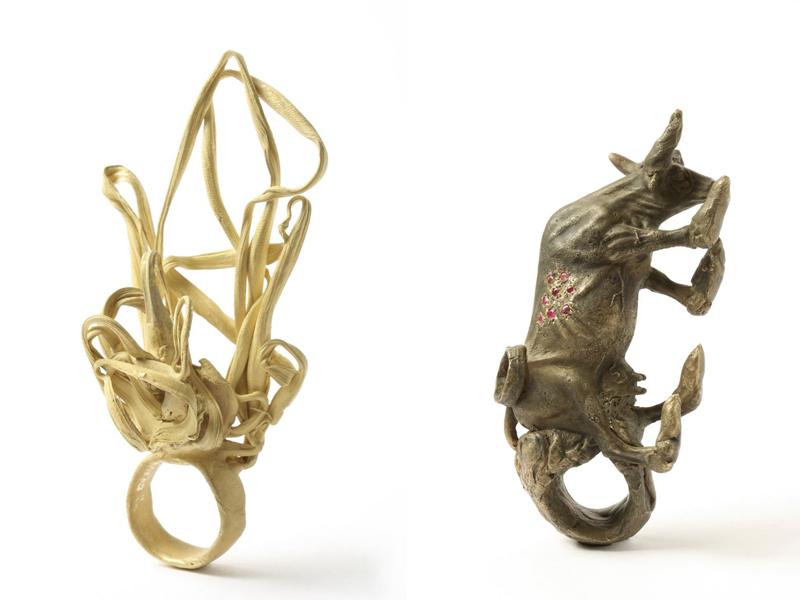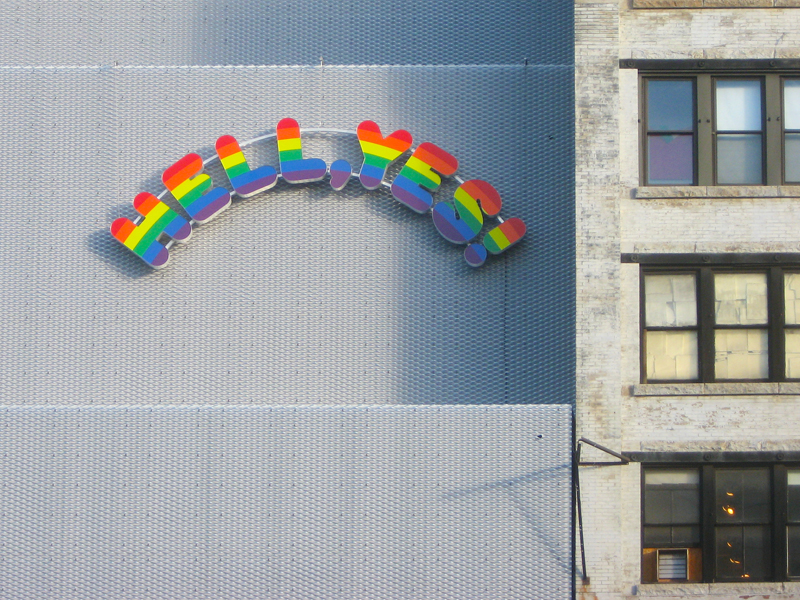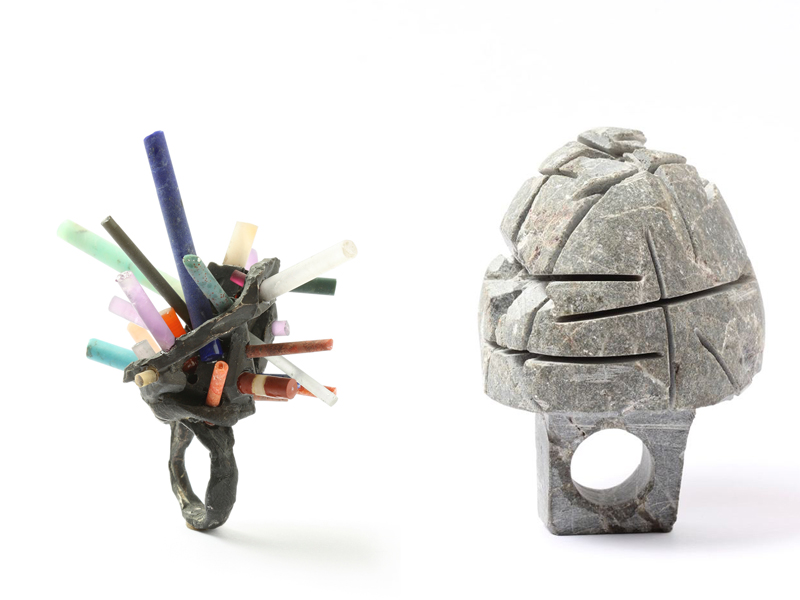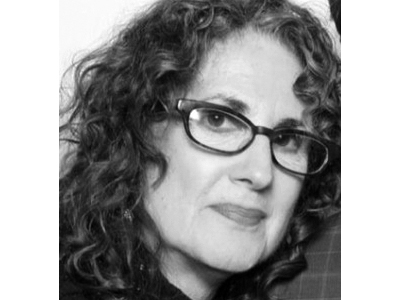
Karl Fritsch: A Retrospective
October 26–December 18, 2015
Salon 94, New York, New York, USA
How can such small objects be so arresting? How can they express such timely humor, existential angst, and astonishing—albeit unorthodox—technical prowess, often within the same piece? How can a maker who concentrates on only one format rarely repeat himself? And why does he choose a format with such challenging limitations? Those, and many other questions, are addressed at a comprehensive exhibition of rings by Karl Fritsch, organized by Salon 94 on Manhattan’s Upper East Side.

Fritsch is undoubtedly one of the most masterful jewelers working today. With training in traditional goldsmithing from Goldschmiedeschule in Pforzheim and his contemporary jewelry education at Akademie der Bildenden Künste in Munich, he is noteworthy for an iconoclastic handling of the medium. In this stunning presentation, ring shanks act as plinths for billowing streamers of gold; a naturally rendered cow is tipped over on its rear end; and monolithic cubes of shiny aluminum house rows of large, multicolored cubic zirconia, while tiny gypsy-set brilliants delineate smiley faces on ovals of silver. In one theme and variations, the word “Hi” is spelled out with stringy, gem-set letters of gold or silver—reminiscent of Hell, Yes!, Ugo Rondinone’s 2001 rainbow relief of neon, Perspex, and translucent film, as well as Brooklyn Bridge Park’s site-specific, painted aluminum sculpture OY/YO by Deborah Kass.

Each of Salon 94’s three New York City galleries is unique. The uptown location, situated in a townhouse on 94th Street between Fifth and Madison Avenues, is a paragon of sophisticated grandeur. The airy exhibition space is backed by a windowed wall that allows the visitor to view an enchanting back garden. Ironically, the juxtaposition of Fritsch’s ruggedly deranged aesthetic with such pristine elegance makes for an irresistible, surprisingly congenial combination; and much of the show’s effectiveness—apart from the innate power of the works themselves—derives from its paradoxical installation. As you ascend the entrance stairs that, incidentally, allow for an almost total view of the open gallery, you immediately realize that the room is devoid of the innovative contemporary sculpture and/or painting habitually associated with this rather intimate setting, which feels like a homey alternative to the white box. Instead, long, narrow planks of wood, perched upon eye-level, incrementally installed supports, bisect the room in a contiguous line. As you get closer, it becomes apparent that a lot is happening on that scaffold—indeed, a dense parade of small objects traverses the entire length, each one individually inserted into a thin layer of clay-like Plasticine that coats the surface of the wood. Closer scrutiny reveals these miniature sculptures to be rings, an autobiographical type of jewelry according to Fritsch, who states: “The ring is desperate, desperate to find a finger, desperate to tell you: I love you, I am beautiful, I am rich, I am cool, I hate you, I come from Ireland or Austria, I want more, I have enough, I am married, I am funny, I am scary, stupid, important, I can’t help you, I am.”[1]

Swiss artist Bernhard Schobinger, another great ring-maker, despite fervently investigating both substance and process, ascribes the Taoist view of emptiness to rings. He expands upon Chinese philosopher Lao-Tze’s classic 6th-century-BC text, Tao Te Ching, stating: “the usefulness of the ring rests on the nothingness about it (the hole).”[2] Fritsch, on the other hand, grounds the ring in its materiality, as semiotic conveyor of emotion and experience—social marker of affiliation and relationship. There is no vacuity here. And Salon 94’s rich sampling of Fritsch’s prodigious output celebrates his perpetual ability to humble, amuse, entertain, arouse, and connect folks on a most primal level. As a seminal voice, Fritsch has, for many years, had a considerable following within the contemporary jewelry community. The imprimatur of a prestigious fine art venue like Salon 94 offers an opportunity for additional connoisseurship, along with placing the work of one of the field’s most familiar figures within a startling new context. The gallery’s direct presentation, designed by Fritsch, invites close scrutiny of the numerous thematic groupings, encouraging a visceral rather than intellectual approach; the lush environment romanticizes the objects, by associating them with such posh surroundings. Not only the clever installation, but, in fact, the entire gestalt leaves the knowledgeable illuminated, while the newly acquainted become enticed.
Jeanne Greenberg-Rohatyn, the gallery’s owner, is to be lauded for regarding contemporary jewelry as a subject worthy of aesthetic inquiry. Her choice of Karl Fritsch as a representative of the discipline is a wise one. Salon 94’s elegant gravitas is the perfect foil for his anarchic wit.






